With so many gorgeous evenings ahead, I am sure you’d love to know how to see artificial satellites. I’m going to show you how.
When you hear the word space, what comes to mind? Meteor showers, constellations, our sun, black holes. What about human-made objects in space? As in artificial satellites! Yes, we can see artificial satellites, and with the naked eye!
I was lucky enough to have a few clear nights, and outside watching the gorgeous Perseid meteor shower August 12! (more on meteor showers here)
I kept seeing small objects chugging along, high in the sky. I realized that I was seeing artificial satellites! What is the deal with artificial satellites, anyway? What are artificial satellites?
WHAT IS A HUMAN-MADE OBJECT IN SPACE?
An Earth satellite, also known as an artificial satellite is a man-made object launched into orbit around the Earth.
What purpose do they serve?
- SCIENTIFIC EXPERIMENTS and ADVANCEMENT
- CLIMATE CONTROL
- COMMUNICATION
- STARGAZING!
WHAT WAS THE FIRST MAN-MADE SATELLITE?
SPUTNIK I
BIGGEST BRIGHTEST ARTIFICIAL SATELLITE IN SPACE
The ISS orbit changes so everyone on our planet has a chance to see it pass overhead.
No telescope or binoculars needed! This is a great science activity!
You can sign up on NASA’s web site to spot the station here! You’ll receive a text or email alerting you when the ISS is passing overhead. (One guess as to whether or not I renew my subscription each year? ) You should at least see it once. Very cool!
Where exactly does the ISS orbit?
The International Space Station is in a Low Earth Orbit. How high up is that?
Point of reference, commercial jets fly about six to eight miles above sea level. (The pilots will often say ‘cruising altitude~ 35,000 feet’) The reason why, is that at this altitude, the air is thin enough to reduce drag and high enough to avoid weather events.
Okay, sometimes there is some turbulence.
Let’s get back to Low Earth Orbits, Medium Earth Orbits, and High Earth Orbits.
DIFFERENCES BETWEEN LOW EARTH ORBIT, MEDIUM EARTH ORBIT, and HIGH EARTH ORBIT
Before I move on, I’d like to point out that an ‘orbit’ is a curved path in space. Curved because of gravity. (You can thank Newton for this fact.) For more reading on orbit shapes, see this article.
GEOSYNCHRONOUS VERSUS GEOSTATIONARY ORBITS
At 35,786 kilometers above the Earth, ( 26,199 miles) an artificial Earth satellite hits what many call a ‘sweet spot.’
If you’re interested in taste receptors and why we like what we like (and why sugar is such a draw for most of us!) I have a post here…
Geosynchronous orbit means that the satellite matches the rotation of the earth. So one orbital period for this bad boy takes exactly one sidereal day. (23 hours, 56 minutes, 4.0905 seconds)
A geosynchronous orbit lying in the plane of the equator is called a geostationary orbit. A satellite in this type of special orbit has the cool property of appearing overhead all the time. Fixed to an observer on the ground. Plus, the orbit is circular!
A geostationary satellite is great for monitoring the weather. If you go to a weather website to see the radar, that information is coming from a satellite in a geosynchronous orbit.
Almost all communication satellites are placed in a geostationary orbit. These orbits are in the ‘real’ sweet spot. (Depending on who you ask about sweets!)
It would be tough to find these in the sky because to us, a geostationary satellite wouldn’t be moving!
LAGRANGE POINTS
I don’t want this to turn into a physics lesson, but since I’ve got my mind on sweets, I need to add one point about sweet spots for satellites in high earth orbit. (HEO)
Lagrange points are special locations where a satellite will stay stationary relative to the Earth as the satellite and the Earth revolve around the Sun.
The sweet spots mean that the pull of gravity from the Earth cancels out the pull of gravity from the Sun!
(For the recipe of that delicious bread, go here!)
I’ll just add that there are five Lagrange points. In honor of that, five desserts above!
THE HIGHER A SATELLITE'S ORBIT, THE SLOWER IT MOVES
GRAVITY!
HOW MANY MAN-MADE SATELLITES ARE IN ORBIT?
As of April 1, 2020, there were a total of 2,666 satellites in space, of which 1,918 were in low Earth orbit (LEO).
Since April 2020, we’ve had many more launches. The busiest being SpaceX, which has been launching satellites at an average pace of one mission per month this year for its Internet project Starlink. So far, SpaceX has launched more than 600 into orbit and has plans of tens of thousands more.
Amazon recently announced its plan, called Project Kupier, to launch a mega constellation of 3,000+ satellites to provide Internet connection to under-connected parts of the world.
Jeff Bezos of Amazon and Elon Musk of SpaceX must chat about this. Maybe over cocktails.
At geosynchronous orbit, the ring around Earth can accommodate 1,800 satellites. Competition could get fierce!
I know, there was a lot of build-up to get to how to see these artificial satellites. I couldn’t resist. Science is so cool.
HOW TO SEE ARTIFICIAL SATELLITES!
1. On a clear night, go outside at dusk. (or dawn.)
2. Dusk is the best time. Why? Because satellites reflect sunlight! We can take advantage of the just setting sun while the sky is dark.
3. Take a seat and get comfortable. Odds are that you won’t have to wait more than 15 minutes. You can see up to 100 on a clear night!
4. An artificial satellite will look like a star, steadily moving across the sky. If the lights are blinking, you are seeing a plane, not a satellite. (remember, satellites do not have their own lights to make them visible.)
5. They remain at a steady brightness and follow consistent speed and direction across the sky.
CONS OF BRIGHTLY REFLECTING SATELLITES
This was an admittedly rare sight (on the right), caught after a SpaceX launch.
Satellites!
They were soon piloted to a higher orbit so became less bright and more spread out.
But satellites reflect a lot of light. Great for us stargazers to see artificial satellites.
This worries astronomers. Why?
Satellites clogging the sky affects scientific data! (Musk and others are working on this issue.)
SPACE JUNK
You might also ask, what about artificial satellites that no longer operate? Waste Management sure can’t pick them up.
Plus, the risk of collision is real. Did you see the movie Gravity? I’m not necessarily recommending it, ( I tend to find positives in most sci fi) but I mention it because they incorporate space trash as a plot complication.
Space junk can impact other objects, and does so at over 22,000 miles per hour! (Point of reference, bullets speed along at 2736 kmh or 1700 mph.)
Collisions with pieces as small as a nut or bolt whizzing around can cause damage to operating satellites and telescopes.
There is even an agency dedicated to space junk! They state that 70% of space junk is in low earth orbit. Here are photos from their site. This is only space junk!
WHAT CAN WE DO ABOUT SPACE JUNK?
For now, scientists and satellite operators do one of two things.
For higher satellites, operators blast them further away. There is an orbit 200 miles above high Earth orbit (HEO), further than the highest active satellites. This is called The Graveyard Orbit.

Getting rid of smaller satellites in LEO is simple. They are directed into the earth’s atmosphere, and they burn up!
Bigger satellites, however, may not entirely burn up. No one wants speeding metal to hit anyone in the head! (Not even angry guy above.)
That’s why operators need to plan for a final destination. They make sure the old satellites plunge into a remote area. This area is in the south Pacific ocean, called The Spacecraft Cemetery!
In 2019, India’s anti-missile testing resulted in over 400 pieces of space junk flying around in LEO for ten days. This put the ISS at risk of collision. Fortunately, the ISS is maneuverable.
But this incident started something great. Town hall meetings and discussions about more solutions to combat the growing potential for space junk.
Science is on it!
For now, let’s enjoy the lovely night sky! Now you know how to see artificial satellites!

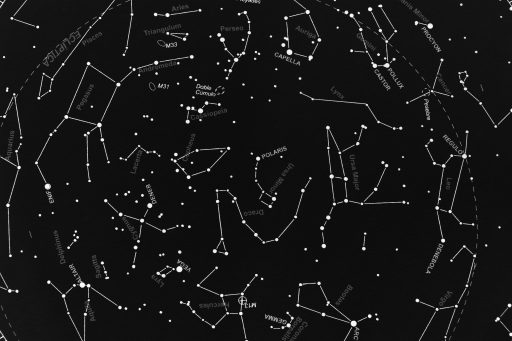
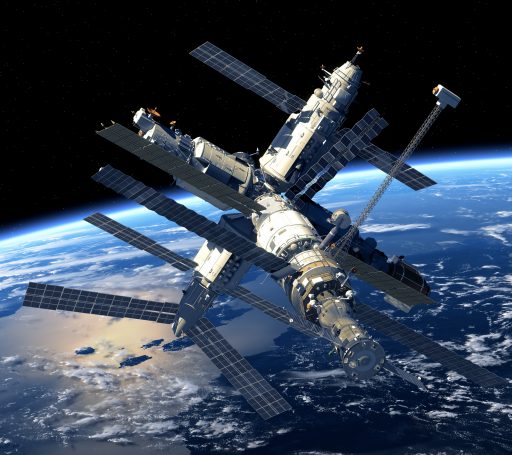


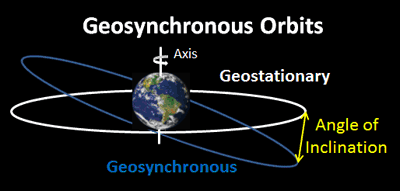
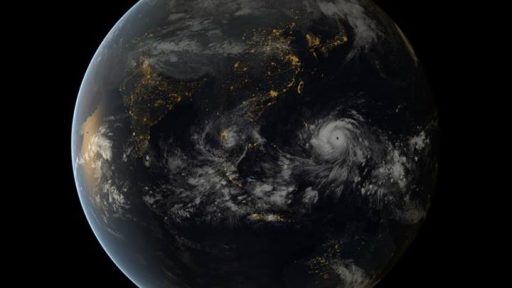

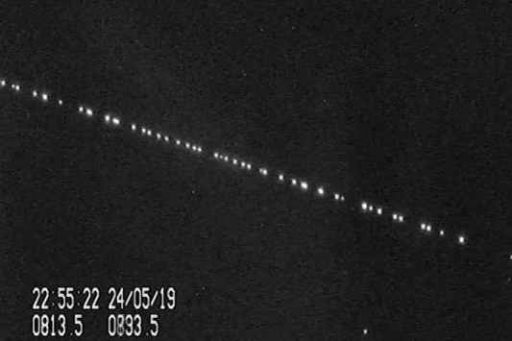
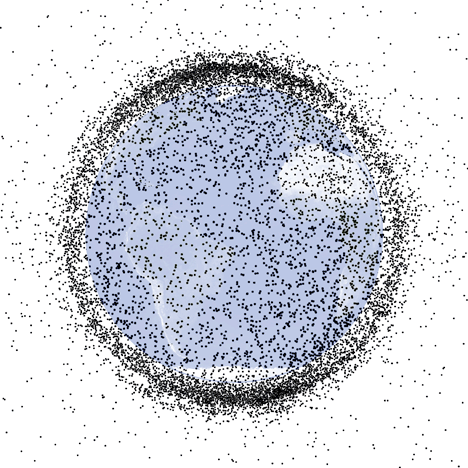
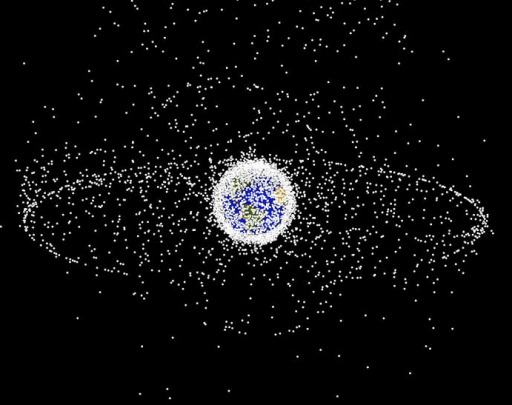
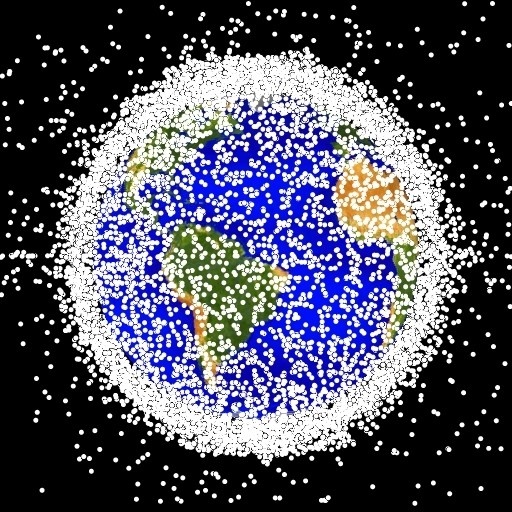

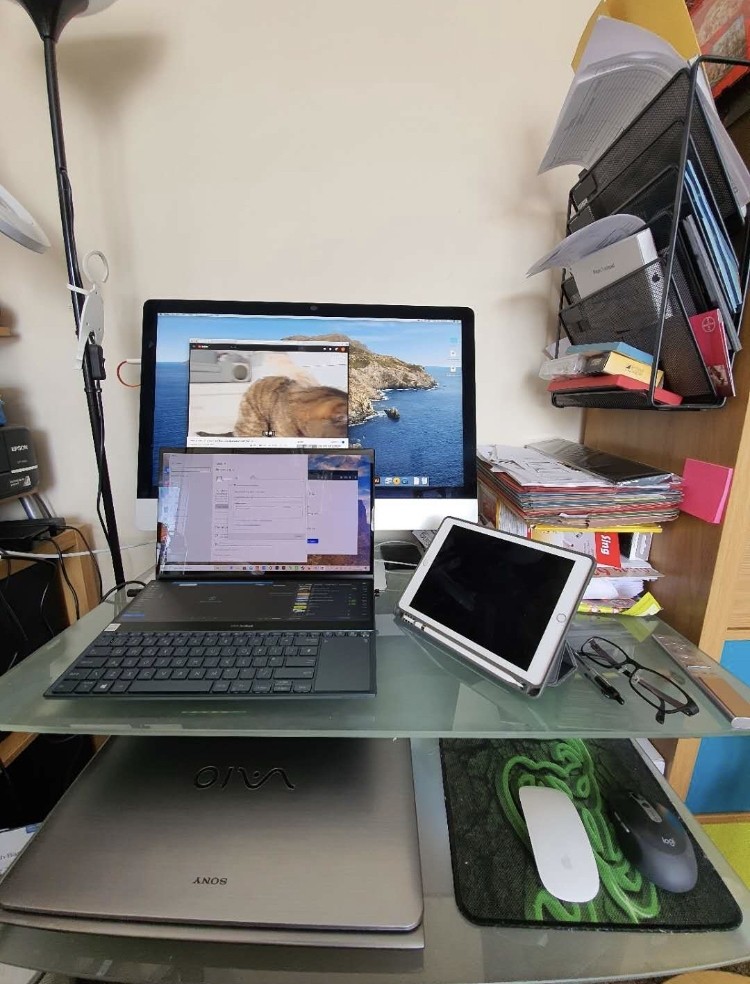
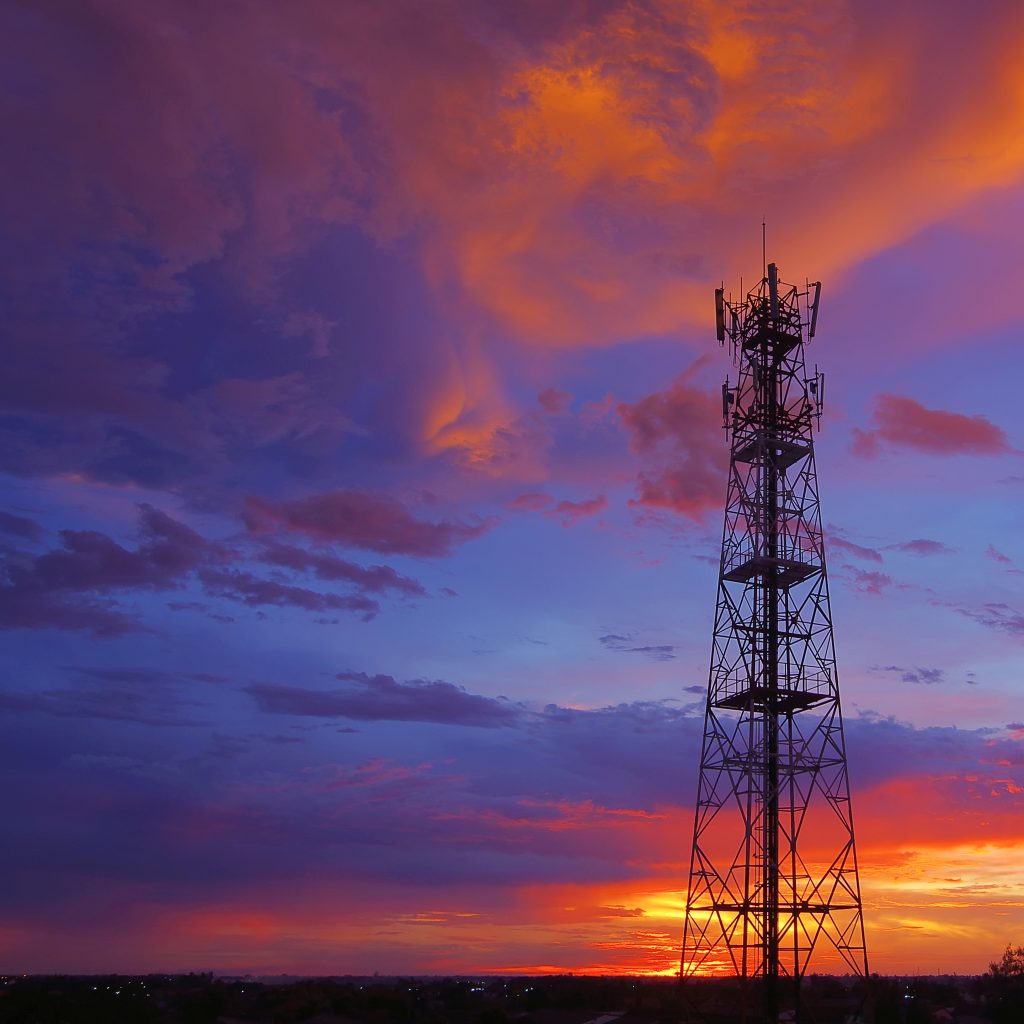


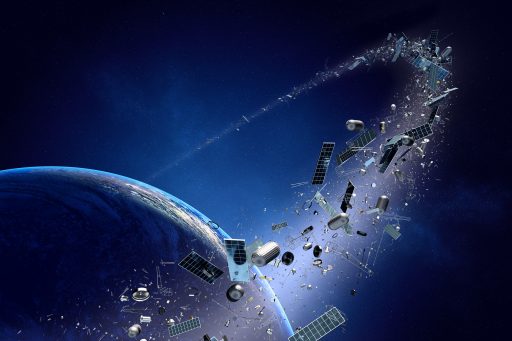







Wow! So much information and facts I didn’t know. The ISS passes over here from time to time but we’ve not have clear enough skies to see it so far.
I hope you have clear skies soon! Thanks so much.
Holy ****! I don’t know whether to be happy that I can see artificial satellites in the sky or sad at the fact that we are polluting the space around our planet as well as the planet itself. Is there no way to bring all of these ‘dead’ satellites back down to earth and recycle them? Sorry, I kind of got side-tracked there – thank you for a very informative post. 🙂
I understand what you mean! I love my 4/5 G network but it’s a concern. Scientists are discussing ways such as a harpoon to capture some of the space junk. It’s going to take time to devise viable solutions. Thanks for stopping by!
That’s pretty cool that NASA will send you a notification for when the international space station will be flying over your location
Really cool! It’s kind of amazing when you go outside at that exact minute and poof! The ISS appears! Give it a try.
Oh this is so cool! I am such a fan od space, so I found this fascinating!
Fantastic! I’m happy that you liked my post. Thanks.
Love this post! So much information I didn’t know! My Nephew is obsessed with all things space I can’t wait to let him know x
He’s going to love looking for satellites. I’m happy you found the post edifying. Thanks!
Wow, a lot of information about satellites and the ISS! I’ll be sure to watch out for a clear day and spend the dusk hour looking for satellites. Thanks for sharing this, I’d love to read more about the space junk solutions.
You’re welcome. I’ll need to write a companion post about space junk with updates! Thanks for the idea.
Wow this is fascinating. Love to read your other posts on space
Thanks so much! There are a lot of fascinating space topics! I’ll be writing more in the coming months.
A very interesting read. I really enjoyed reading this very detailed and informative post and to learn about artificial satellites. Thanks for sharing
Glad you enjoyed it! Thanks so much.
It;s both cool to think that I can see some of this but also sad about the space junk. Great post with some really interesting info!
The space junk is disconcerting, I agree. Glad you found it interesting! Thanks.
Good post! I learned something new from reading this post. Thank you for sharing.
Thank you so much for stopping by!
I’ve never even thought about looking for satellites. Space junk is an interesting one, I assumed there would be quite a lot by now, and it certainly needs looking before it becomes a massive problem.
Agreed! I hope you find some time to check out the nights skies. Thanks, Adam!
Hola,
Wow, amazing post. It’s impressive what we can do and send satellites into space. But it’s also depressing we are polluting space with so much junk orbitting around.
Great tip about signing up at NASA, hopefully I’m going to see ISS one day.
Adriana
I hope you see the ISS someday, too! Thanks!
I’ve seen a lot of moving lights in the sky and wondered what they were. Some are brighter than stars and they usually move slow and in a straight line.
How cool that you’re seeing so many. SpaceX actually did another launch this week, not visible where I am, but maybe you’re better situated. Could be what you’re seeing. Thanks!
I always thought what I saw in the sky were stars but they are satellites oftentimes. Pretty cool to learn about how many satellites we have up in space. WOW! I know SpaceX has been busy too. My concern is what happens after satellites die? We littering space too?
Nancy ✨ exquisitely.me
We ARE littering space. I’m going to keep an eye on progress with these task forces. I hope they’ll come up with some good solutions soon. Thanks, Nancy!
I always learn so much from your posts, Sue, and appreciate your photos and research. I’ll be sure to think of you as I study the night sky.
Who could ask for anything more! Here’s to clear skies so you can see some satellites. Thanks, Amy!
Very interesting topic, Susan! You go into a degree of detail that makes me want to find out more, as it’s all so fascinating. When our daughter was little, we went out our front door and were able to see the International Space Station go by overhead. That was so cool!
I didn’t realize there are so many artificial satellites. Will the increased reflection light impact the ability to maintain dark skies? Also, I worry about all the space trash.
The increased reflection won’t affect the skies so much, but these satellites do affect astronomers, who are researching quasars, black holes, looking for exoplanets (planets outside our solar system), etc. The reflecting surfaces of artificial satellites cause artifacts–in this case, dots of light in land-based telescope fields. The light dots obscure scientific data.
I’m going to stay on the look out for new tech that –hopefully– can eliminate or recycle space junk.
How cool that your daughter saw the ISS! Thanks so much, Kathy!
Oh what a cool post. I would love to see an artificial satellite one day! Thanks for sharing all the tips!
You’re welcome! I’m glad you stopped by!
I’m so glad you included that section on space junk as I think that’s a huge issue with things like this. It’s kinda cool that you can see something like that with the naked eye (I didn’t know that) but it’s so sad at the same time. I hope there’s a better alternative to littering space sooner rather than later x
Sophie
Yes, it was a little tougher than I thought to stay positive about artificial satellites, what with all the space junk. That said, I have faith in the scientific community. They’re working on it. Thanks!
This is interesting! I love anything that relates to the outer space. Thanks a lot for these info x
You’re welcome! I love space topics, too! I’ll be writing more about space in the coming months. Thanks!
It’s neat that we can see the ISS from here. I knew it was probably possible, but realizing that we can learn when it’s coming is something I need to sign up for. Especially after taking a class on this.
Exactly! seeing the ISS is cool. Thanks so much.
This was so fascinating. I never really thought about all the space junk up there. Hopefully they can find a solution for that soon!
Agreed! I’m going to keep an eye on new tech to alleviate the space junk. Thanks!
Thank you for sharing all of this information! I absolutely loved reading this! 🙂
Thanks so much!
This is such an interesting post with so much information.
I’m happy you think so! Thanks!
This is really cool information! Great post!
Thanks!
Great post! My husband and I love watching the ISS pass over us from time to time – although I have to be honest my eyesight is so bad I can’t actually see it myself even with my glasses but he always gets very excited! 🙂
Maybe you could get a pair of binoculars to visualize it? I’m happy that he enjoys seeing it, at least. Thanks, Hayley.
Wow this was such an interesting read, I am completely obssessed with space these days. I recently spotted some artifical satellites back in July on a very clear evening on the beach. It was incredible to see the satellites darting across the nights sky!
Cool that you spotted satellites! It’s so intriguing to think that they rule our communication system. Okay, maybe a little frightening, too! Thanks!
Very interesting post! I learned a lot.. it would be really cool to see these artificial satellites. Thanks for the tips!
It would be cool to see an artificial satellite! I hope you manage it. Thanks!
Loved this article. It was very informative indeed! As always, I love the work that you are doing on your blog, and hence, I have nominated you for “The Vincent Ehindero Blogger” award. I would love to see you participate. For more details, you can check out the recent post on my blog. 🙂
Thanks so kind, thank you! I’ll check it out!
Amazing blog, fun information, but also a little sad. Thanks for talking about all the space junk too.
Agreed! It was difficult not to get dragged down by the sheer numbers of artificial satellites in LEO. They are fun to see, though. Thanks, Eva.
Some nights I see in the sky sparking bright, it must be a satellite! I’m just wondering what new technology will be in the next 10 years? And I hope in the soonest time, science will have solutions for space junks. The impacts are kinda worrying, I don’t know if the effects are starting to show now… Thanks for this article!
It sounds as if you’ve seen satellites! Cool. I hope science will devise some solutions for space junk too! Thanks so much!
Another great post! I’d love to join you and Jeff and Elon for cocktails 🙂
Thanks! I’ve got one more glass! You’re in!
So informative post. I wasn’t aware of the space junk. Thanks for sharing.
BLOG- https://jenyscloset.wixsite.com/jenyscloset/post/styling-oversizes-clothes
Thanks, Jenny!
This is so interesting! I love anything to do with space and used to spot loads of satellites.
Nice that you’re already on top of this. Thanks!
I love this Susan! I am already enrolled to get the text message when the ISS is going to be visible, I love it! I live on the little island of Kaua’i and it’s generally pretty dark here with low light pollution. I tried to see the Perseids this summer, but unfortunately it was pretty cloudy for the entire stretch during the peak. Ah well, next year!
Too bad about the darn clouds but there’s a nice meteor shower in December, the Geminids–Dec 13-14–so you can try again! I’m so excited that you’re going to see the ISS! I love Kaua’i. We hiked the along the Na Pali trail/coast. I’d love to do it again someday. Amazing!